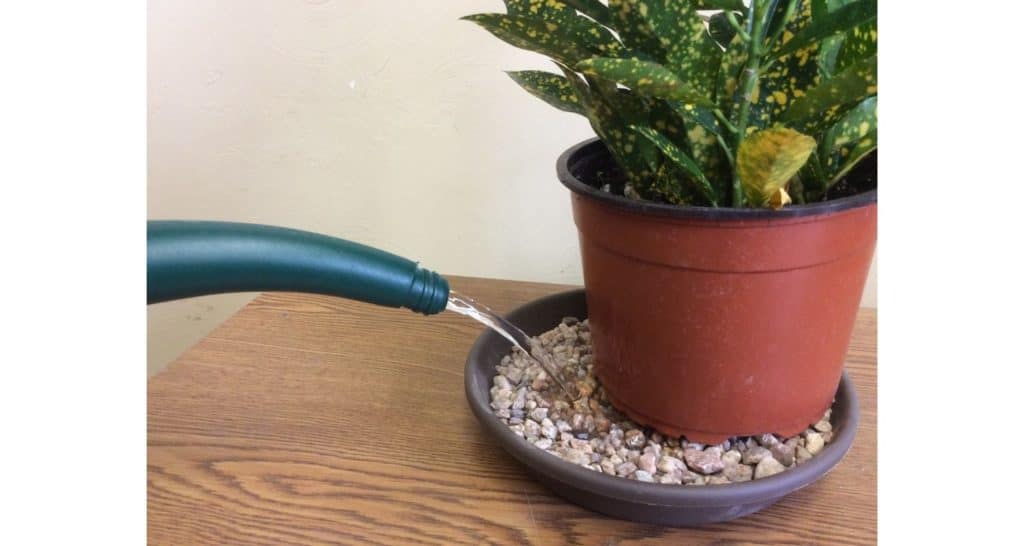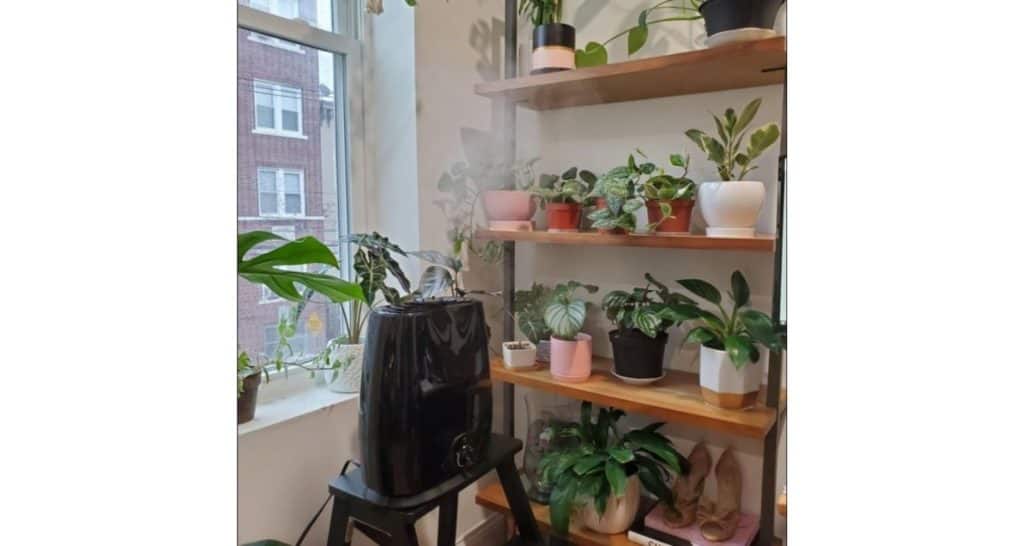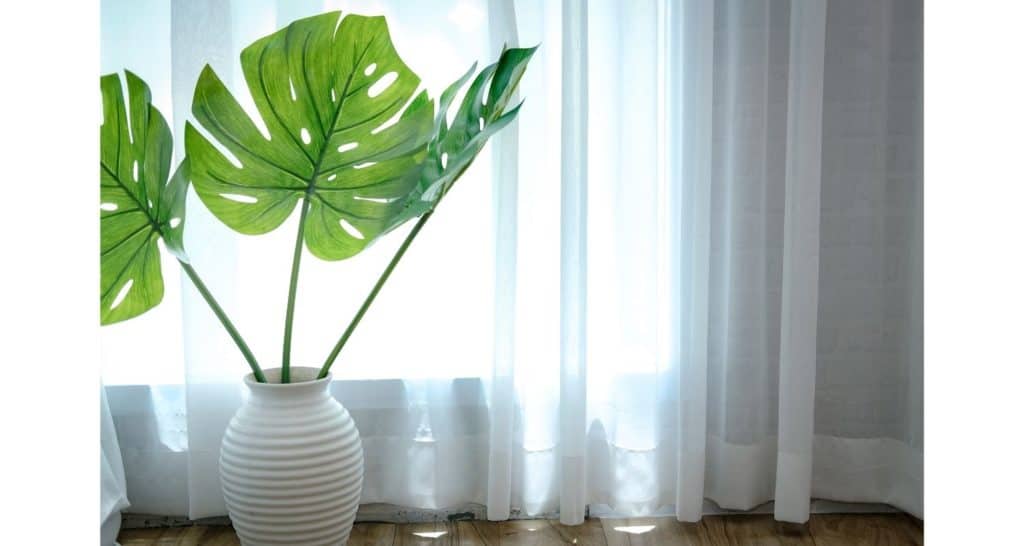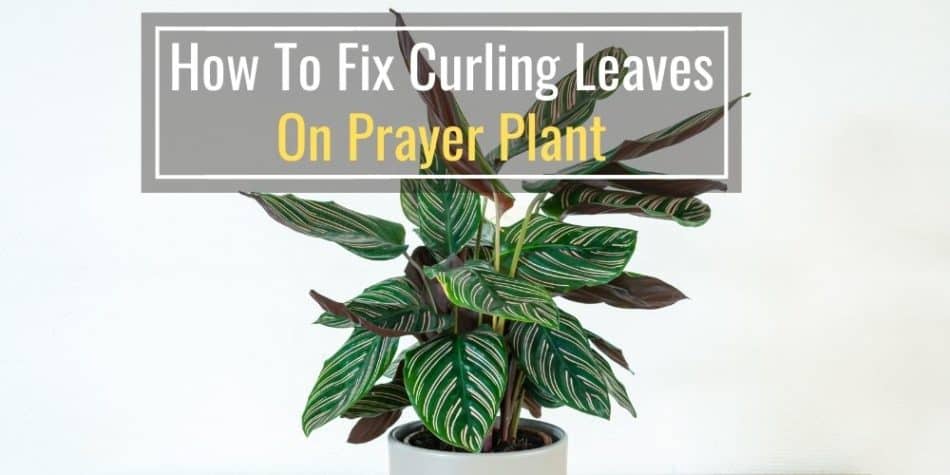The prayer plant, also known as maranta leuconeura, have beautifully patterned leaves that looks as though they have ribs.
Prayer plants earned its common name since the leaves will fold up at night similar to praying hands and lay flat during the daytime.
As beautiful as prayer plants are, they are a bit moody when it comes to care requirements. Prayer plants can become drama queens if the plant does not receive the proper conditions it desires.
One of the first and most common signs of stress on a prayer plant are curling leaves.
If you have a prayer plant with curling leaves then this guide will help you figure out what the issue is and how to solve it. Now let’s cover the most common reason for curling leaves on prayer plants.
The most common reason for curling leaves on prayer plants is underwatering. Other reasons that can cause curling of leaves include temperature extremes, insufficient light, and lack of humidity.
Common Reasons For Prayer Plant Curling Leaves
Prayer plants grow horizontally on a flat surface with the leaves sprouting up in tiny rolls until they unfurl to reveal the beautiful leaves.
Prayer plants are native to tropical regions so they prefer humid and slightly warm environments. Keeping this plant’s native tropical habitat in mind helps when trying to figure out why the leaves are curling.
There are two common types of prayer plants and both have similar growing requirements. So lets cover the most common reasons and solutions for curling leaves on prayer plants.
1. Underwatering
One of the biggest and most common reason that cause the prayer plant’s leaves to curl inwards is due to underwatering.
However, do not go gung-ho and start overwatering this plant either as providing too much water to a prayer plant can also cause health issues.
So the first step is to inspect the plant and determine if the plant is being underwatered.
To check if the plant is underwatered, first take the plant out from its pot and check if there is moisture in the soil. You can also stick your finger in the soil about 1 to 2 inches deep if you do not want to remove your plant from its pot.
If the soil is dry then it means the plant is underwatered.
So lets cover how to water a prayer plant.
How To Water A Prayer Plant
The prayer plant is a tropical plant so this plant does not like its soil to completely dry out.
Make sure that your pot has drainage holes to prevent root rot since this will allow the excess water to pour out of the pot.
Also when watering try to use room temperature water as opposed to ice cold water.
Use one of the following methods to water a prayer plant:
- Place the potted plant into a bin of water and let it soak for 30 minutes
- Water the top of the soil and continue watering until excess water starts pouring out of the drainage hole
- Pour water into the plant’s saucer and allow the plant’s soil to absorb the water it needs.
Regardless of which watering method you use, make sure to pour any excess water out before placing the prayer plant back in its original location.
2. Lack Of Humidity
A prayer plant prefers a humid environment which means most homes are less humid than the plant prefers. This is especially true during winter when the heater is turned on more frequently which also dries out the air as it heats the home.
Keep in mind that heater vents, drafty windows, or walkways are some of the least humid areas to place a tropical plant which can cause the plant’s leaves to curl.
How To Increase Humidity For Prayer Plant
Dry air or lack of humidity is another common reason for curling leaves on a prayer plant.
Here are a few ways to increase the humidity for the prayer plant so that the leaves will begin to uncurl.
- Mist the leaves regularly to keep them moist. You can use a spray bottle and spray on the leaves in the morning, few times a week.
- Wash the prayer plant leaves. This will not only improve the humidity of the plant, but also keep the plant clean. It will wash off the dust and insects that might be living there. So, whether the leaves are curling or not, showering the plant is a healthy activity.
- Keep a tray of water near the plant to keep the environment humid. You can also place the plant on a tray full of some pebbles and water. As the water will evaporate, it will give moisture to the air in the surroundings.
- A long term solution to the lack of humidity issue is that you buy a humidifier for the prayer plant. There are a variety of humidifiers available on the market, the ones that don’t need a frequent refill are more useful.
Here is more detail on how to create a pebble tray or using a humidifier in order to increase the humidity around a tropical plant since these are, in my opinion, the best options.
Simple DIY Humidifier: Pebble Tray
Pebble trays are a simple and effective solution to providing more humidity to plants. A pebble tray is exactly what it sounds like – a tray full of pebbles.
Most house plants, including prayer plants, are tropical plants that can grow better in a humid environment.

In order to make a pebble tray:
- Select a shallow tray that is larger than the base of the plant’s pot
- Fill the tray with a single layer of pebbles
- Add water so it rises to about halfway up the rocks
That’s it! You have now created a simple but effective pebble tray for increasing humidity.
Next just place your plant on top of the pebbles and add water to your tray if it ever dries out.
Humidifier: Easy Way To Increase Room’s Humidity
One simple solution is to periodically mist your indoor houseplants to increase the humidity. However, this is manual and, personally, I’m too lazy to continually spray my plants every so often.
An easier solution is to place a humidifier in the room with all of your tropical plants. A humidifier will allow you to adjust the settings to provide the right amount of humidity year round.

I use this humidifier in my room and the water reservoir lasts for about 2 days before needing to be refilled. I highly recommend it for a low maintenance way of keeping the room humid for your houseplants.
3. Ideal Temperature For Prayer Plants
A prayer plant prefers temperatures in the range of 60°F to 80°F.
This means that prayer plants cannot withstand outside temperatures if its cold during winter. So windowsills may become too cold for this plant as well as any doorways that get frequently opened.
Be mindful of any air vents or radiators as the temperature in these areas may increase above 80°F as you heat your home.
4. Light Requirements For Prayer Plants
Prayer plants prefer bright indirect sunlight as opposed to direct sunlight. However, a prayer plant can withstand a few hours of direct sunlight each day as long as it’s not the most intense sunlight around noon.
This means west, east, and north facing windows are fine for prayer plants since they will only receive a few hours of direct sunlight each day and receive bright indirect sunlight the rest of the day.
Too much direct sunlight may cause the leaves to curl and can also scorch the leaves.
So if you want to place your prayer plant in a south facing window then we need to place a sheer curtain in order to dim the light intensity.
Hang A Sheer Curtain To Turn Direct Sunlight Into Bright Indirect Light
If the direct sunlight is too intense or is harming the prayer plant then you can hang a sheer curtain to dim the sunlight’s intensity. Sheer curtains are transparent curtains that allow in a fair amount of light while blocking direct sunlight.

Most indoor houseplants thrive in indirect sunlight so this is a great option if you want to place other types of plants near the sunny south facing window.
Not to mention sheer curtains add a bit of privacy. Sheer curtains can be found on amazon in all colors and sizes.
5. Water Quality
In some cases the water quality can also cause the prayer plant’s leaves to curl.
If you think the above reasons are not causing the leaves to curl, then you must check the quality of water you’re giving to the prayer plants.
If the tap water of your area contains more chloride and fluoride than your prayer plant prefers then the leaves may begin to curl. The excess fluoride gathers around the roots and create an unfavorable situation for the plant.
The build-up of these minerals in the soil can cause the leaves to curl, get brown, and burn.
How To Improve Water Quality For Prayer Plant
To prevent the plant from being affected due to the water quality, use filtered water when watering a prayer plant.
However, if you don’t have proper means to filter the water or don’t have access to filtered water then you can either use rain water or spring water.
If you only have access to tap water then fill up a watering can of tap water and allow the water to rest for about 2 hours. The harder minerals will sink to the bottom and some of the other chemicals will evaporate off.
Gently water your prayer plant and make sure not to use the water near the bottom of the watering can.
6. Soil And Fertilizer
Prayer plants can flourish in almost all types of soil, but you have to make sure that it drains properly.
A traditional houseplant potting soil is good to use, but if it doesn’t drain well then add coarse sand or perlite to the mixture. The soil for the prayer plant should be acidic with a pH of 5.5 to 6.
Soil Mixture For Prayer Plants
Use the following ratios to create a balanced soil mixture for prayer plants:
- 1 part coarse sand or perlite
- 1 part garden soil
- 1 part coconut coir or peat moss
- 1 pinch of lime dust
You can use fertilizers about once a month when the plant is growing during the spring and summer months.
Prayer plants are dormant during the winter months and do not require any fertilizer.
7. Natural Leaf Curling At Night
Prayer plants are unique plant where their leaves curl up at night and unfold when its day time.
In fact, the name prayer plants comes from the fact that they curl and look like they are praying.
Sometimes the plant’s leaves may not come out of the “praying position” even at day time, so there’s nothing to worry. This is just a natural phenomenon and you don’t need to fix it.
However, you need to monitor properly whether the curling is natural or due to some other reason.
Conclusion
Prayer plants are some of the cooler houseplants to have due to their beautiful ribbed leaves that naturally curl or fold up at night.
However, having curling leaves can be a nuisance since this plant’s beauty really comes from its leaves.
Thankfully curling leaves are just an early indicator of stress with a prayer plant and there is plenty of time to correct the issue.
Just follow this guide and work your way down this list to determine what is causing the leaves to curl on your prayer plant. Once you resolve the issue, your prayer plant will return to its former glory.

